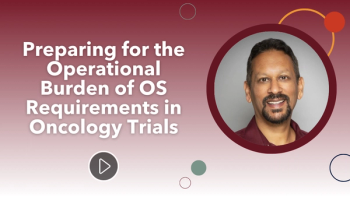
Ethnobridging to Accelerate Global Drug Development
Multinational pharmaceutical companies are under intense financial and competitive pressures to make the drug development process more effective and efficient, and to expand into a greater number of international markets.
Multinational pharmaceutical companies are under intense financial and competitive pressures to make the drug development process more effective and efficient, and to expand into a greater number of international markets. According to IMS1, Asian markets are leading sales growth in global pharmaceuticals and shifting industry focus from North America and Europe to Asia.
Despite such rapid growth, Asian countries present significant challenges. Sponsors must account for cultural issues and differences as well as regulations that require inclusion of clinical data from native populations. Such regulatory environments have resulted in costly delays and billions of dollars in lost sales.
In recent years, new opportunities for biopharmaceutical companies to incorporate Asian countries into early stages of drug development programs and accelerate the product introduction into these important markets have resulted from changes in the Chinese, Taiwanese, Japanese and South Korean regulatory environments. Sponsors developing compounds in Europe and North America can collect and analyze data from native Asians living in other countries – a concept known as “ethnobridging” – to implement cost-effective, multi-ethnic approaches to clinical trial programs.
Bridging Studies Can Speed Drug Development
Ethnobridging studies -- and volunteers who participate in them -- must meet strict “bridging” criteria to be accepted by China’s and Japan’s regulatory authorities. Volunteers must be natives of these countries and cannot have been away from their native country for more than five to 10 years. Their lifestyles, especially in terms of diet and other health-related factors, must not have changed significantly since relocating. Typically, these requirements mean that volunteers must live in areas with large Chinese or Japanese communities, such as Los Angeles or London, where they are more likely to maintain their native lifestyles.
In some cases, the Phase I process can be completed more quickly and costs can be reduced by as much as 30 to 40 percent through ethnobridging. In one review, the Japanese regulatory agency published data2 showing that a new drug approval (NDA) took 32 months using an ethnobridging strategy compared to 56 months when no bridging was employed.
A History of Ethnobridging Studies
In 1998, the International Conference on Harmonisation (ICH) published a guidance (E5) entitled “Ethnic Factors in the Acceptability of Foreign Clinical Data.” Guidelines recommended regulatory and development strategies on use of clinical data collected in one region to support drug and biologic registrations in another region as long as ethnic factors were addressed using bridging studies.
The E5 guidelines facilitated drug and biologic registration among ICH regions by recommending a framework for evaluating the impact of ethnic factors on a drug’s efficacy and safety. Recommended regulatory and development strategies would permit adequate evaluation of the influence of ethnic factors, minimize clinical study duplication and expedite the drug approval process.
One noted challenge involved sending clinical data to Japan. Pharmaceutical companies could use data generated in the West, but would still be required to supply bridging studies or comparative studies between Japanese and Caucasian trial participants. In theory, this idea was sound; however, in reality, collecting data on Caucasian participants in Japan is nearly impossible given the nation’s ethnic makeup and the pharmaceutical industry’s limited success with initial bridging pharmacokinetic (PK) studies. For this reason, the Japanese Ministry of Health and Welfare was engaged to discuss conducting studies outside of Japan with Japanese subjects.
By 2005, the industry’s interest in conducting global trials that involved Japan and other Asian countries early in drug development had grown significantly. At this time, European, Japanese and U.S. pharmaceutical companies began designing trials, starting in Phase I, which included Asian countries.
In 2007, Japan, Korea and China began cooperating on clinical development issues. Japanese regulatory authorities led this effort and began accepting Phase II/III and efficacy data from other Asian countries in lieu of Japan-only data as long as pharmacokinetics were the same between Japanese and Chinese and/or Koreans.
In China, regulatory authorities began requiring ethnic Chinese data for global trial participation. The Chinese Food and Drug Administration (CFDA) has always required Chinese PK data for product registration in the country. However, the CFDA has not required Chinese Phase 1 data for global trials participation. This is now changing and Chinese regulatory authorities appear to be following the Japanese lead by requiring Chinese PK data to enjoin global trials.
Key Development Considerations
There are several key questions to raise when considering whether to begin developing products for Asian markets outside those markets. For example,
- Is initial development in U.S. or E.U.?
- Will Phase II or Phase III global trials include China, Japan or South Korea?
- Will the next trial conducted by the pharmaceutical company or clinical research organization involve China, Japan or South Korea?
- Will “significant efficacy data” be generated in China, Taiwan or Korea and be used for registration in Japan?
Ethnobridging in Practice
For global companies, the first IND filing often occurs in U.S. or E.U. During a routine Phase I development, sponsors now can incorporate Asian data in parallel to these Western regions. Japan requires sponsors to provide Japanese PK data prior to any efficacy studies in Japan. This data allow sponsors to include Japan in a Phase II Japan/Asian trial or a Phase III global trial. If the strategy is to use ICH bridging, then PK data will be useful in meeting the bridging PK requirements.
Gathering Chinese PK data outside of China facilitates the country’s participation in global studies and may be used for registration in China and Taiwan. Since it takes eight to nine months to file an IND in China, having ex-China/Taiwan data collected outside of those countries while waiting for the SFDA to approve the INDs may be an option. While ex-China PK data has been used to facilitate China’s participation in global trials, it is currently unknown if it can also satisfy product registration requirements. It is likely that Chinese regulatory authorities will eventually allow data collection outside of China, even for registration purposes, if it satisfies SFDA requirements the same way ex-Japan data currently fulfills the Japanese Ministry of Health’s requirements.
TQT Data Also Required
Since 2005, FDA and European regulators have required nearly all new molecular entities (NMEs) to be evaluated in a Thorough QT (TQT) study to determine a drug's effect on QT interval, the measure of time between the start of the Q wave and end of the T wave in the heart's electrical cycle. Known as ICH E14, this guideline required establishment of a single trial -- the TQT/QTc study -- to identify drugs that could cause QT prolongation.
Initially perceived as a great challenge, the TQT study has rapidly become a standard component of clinical development programs for NMEs. In Asia, the Japanese Ministry of Health has adopted this guideline and requires QT data from Japanese subjects. Whether a full TQT study must be repeated in Japanese subjects remains to be seen. Currently, sponsors are collecting more EKG data during ethnobridging studies or allowing Japanese subjects to be included in Western TQT studies.
Accelerating Clinical Development in Asia
The pharmaceutical industry and governments of China, Japan and South Korea have a vital interest in accelerating and expanding the marketing of novel therapeutics. While regulatory requirements will continue to evolve, companies that understand how to leverage ex-Asia populations in their global development plans will gain an advantage.
Key success factors for faster product development in Asia include:
- Including Asian populations at the earliest stages of development to support efficient global registration and marketing,
- Establishing a broad ethnic base of data and designing studies that can bridge data between countries and regions,
- Performing PK, PD and other Phase I testing with multiple populations as early as possible to reduce ethnicity-based safety risks,
- Working with Asian regulators to ensure study designs, protocols, analytical methods and bridging strategies meet their individual requirements, and
- Ensuring all participating nations and institutions conduct trials under Good Clinical Practices regulations as defined by ICH.
Conclusion: The Future
As regulatory environments in China, Japan and South Korea continue to evolve, the global pharmaceutical industry will be challenged to find the right resources and best practices to take advantage of new requirements, while understanding differences that continue to characterize the drug approval process in each country.
With the right approach, global companies can generate a percentage of clinical data from ethnic populations living outside their native Asian countries to accelerate global product development. Pharmaceutical companies and CROs able to effectively leverage the full potential of enthobridging can potentially gain a competitive advantage by saving time and money and maximizing the value of new products.
1 http://focustaiwan.tw/news/ast/201307170022.aspx
2Uyama, Y et al. Clin Pharmacol Ther 2005: 78: 102-13
Stanford Jhee, Pharm.D., is a Vice President of Scientific Affairs, Early Phase, at PAREXEL International.
Sy Pretorius, MD, MS (Pharmacology), MBA, is Corporate Vice President, Worldwide Head Early Phase at PAREXEL International
Newsletter
Stay current in clinical research with Applied Clinical Trials, providing expert insights, regulatory updates, and practical strategies for successful clinical trial design and execution.






.png)



.png)



.png)
.png)
